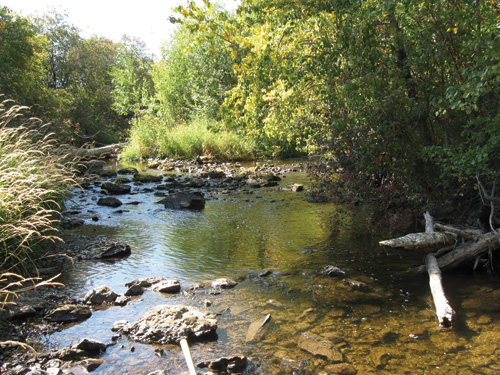Floodplains and Riparian Zones
Floodplains are lowlands adjacent to rivers that are subject to natural floods. Minor floodplain inundation can occur as frequently as every two to three years. Large events, like 50 or 100 year floods, may inundate the entire floodplain. The broad, glaciated valleys of the Flathead Watershed have allowed its large rivers to form extensive floodplains. These floodplains serve many important functions. They offer rich soils that support the diverse plant life of riparian areas. Riparian areas are found adjacent to streams and rivers where terrestrial and aquatic ecosystems overlap to provide homes for a tremendous diversity of plants and animals. Riparian vegetation typically includes trees, shrubs, and grasses that depend on wet environments to survive, like cottonwood trees, willows, and cattails. Riparian ecosystems are also present along lakes, ponds, wetlands, and sloughs. Riparian vegetation moderates flooding by slowing flood water and allowing it to recharge shallow aquifers. The water that recharges these aquifers sustains the river during dry periods. Riparian ecosystems also function to filter sediment and nutrients, naturally cleaning the water.
 |
|
| Figure 1.6: Deciduous Riparian Area. Source: Amy Chadwick, Watershed Consulting |

